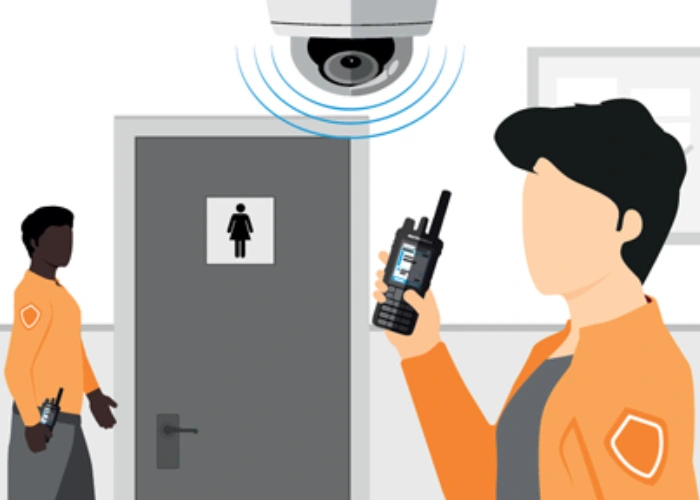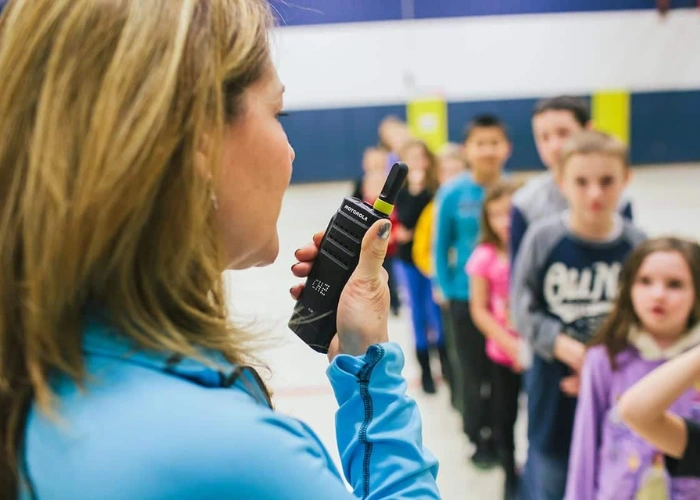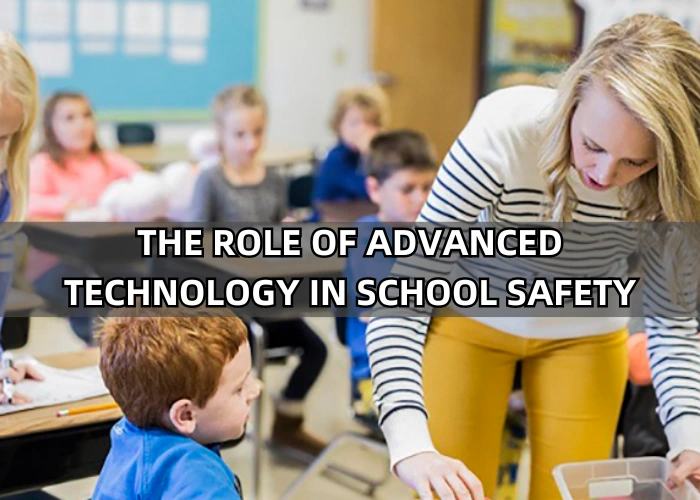Our schools have experienced more traumatic events than we care to count in recent years. An article by the American Academy of Pediatrics just a few short years ago paints a pretty horrific story. In 2019, gun injury became the number one contributor of fatalities among children aged from birth to 19 years.
Plus, at the time of the publication, the U.S. had experienced 57 times as many school shootings as all other major industrialized nations combined. Regardless of political preferences or interests, the threat to our children and their educators is real.
At EMCI Wireless, we are dedicated to doing what we can to stop the threat of gun violence in our schools. We’re doing this by ensuring that educational institutions and law enforcement in central and south Florida have the best possible communication systems to ensure communication is in place to stop suspects and keep as many people free from harm as possible.
The Reality of Safety Challenges in Schools
Gun violence in the U.S. is on the rise. The recent shooting at the parade in Kansas City meant to honor the Chiefs after their Superbowl win simply reminded the U.S. at large of how significant this problem is. At that time, ABC News reported that 5,000 people had already died of gun violence so far this year.
And while this article is not intended to take a side on the great gun debate, we are here to help resurface the concern. Consider the following:
Columbine High School Shooting (April 20, 1999, Littleton, Colorado)
Two students opened fire at Columbine High School, killing 12 students and one teacher before committing suicide. The tragedy marked a big moment in the national discourse regarding gun violence in schools.
Virginia Tech Shooting (April 16, 2007, Blacksburg, Virginia)
A senior at Virginia Tech shot and killed 32 people in two separate attacks on campus before taking his own life, making it the deadliest school shooting in U.S. history.
Sandy Hook Elementary School Shooting (December 14, 2012, Newtown, Connecticut)
A 20-year-old gunman killed 26 people, including 20 children aged 6 and 7 years old, and six adult staff members, before committing suicide. The incident profoundly impacted the national conversation on gun control and school safety.
Marjory Stoneman Douglas High School Shooting (February 14, 2018, Parkland, Florida)
A former student opened fire at the school, killing 17 people and injuring 17 others. The survivors became vocal advocates for gun control and school safety measures, leading to the March for Our Lives movement.
Santa Fe High School Shooting (May 18, 2018, Santa Fe, Texas)
A student fatally shot ten people and wounded 13 others. This tragedy further fueled the debate over gun laws and school safety protocols.
Oxford High School Shooting (November 2021, Oxford, Michigan)
A sophomore student was convicted of killing four individuals and wounding others at Oxford High School. His parents were charged with involuntary manslaughter for failing to secure the handgun used in the shooting.
Robb Elementary School Shooting (May 24, 2022, Uvalde, Texas)
An 18-year-old used an AR-15-style rifle to kill 19 students and two teachers at Robb Elementary. The tragedy, lasting over an hour, is the second deadliest school shooting in U.S. history. It was this very shooting that also raised concerns about the improper usage of radios (or lack thereof) and why expectations and training need to be front and center.
Unfortunately, this list is far from comprehensive. That said, it is enough to tell us that our schools need heightened security measures and better communication mechanisms.

The Role of Advanced Technology in School Safety
Advanced technology plays a big role in keeping schools safe. Think about tools like emergency communication systems, cameras that watch in real-time, and systems that control who can enter a building. These tools help make sure students and teachers are safe.
But it’s about more than just safety. We also want to keep student information private in schools. Two-way radios are ideal for this purpose. Unlike loudspeakers that everyone can hear, two-way radios let the principal talk quietly to teachers or other staff. Many of these devices also offer encryption, ensuring maximum privacy. This way, they can share important information without everyone else listening in.
Many people use two-way radios in school. The principal, the people who take care of the school, the folks who help students get on and off buses, the security team, sports coaches, cafeteria staff, and even those running after-school programs all use them.
What do they use these radios for? They help keep the campus secure, manage fire drills and lockdowns, and ensure car and bus pickups go smoothly. If a student goes missing, they can quickly let everyone know. They’re also handy for talking during field trips, organizing sports events, responding to incidents, and letting everyone know if there’s a stranger on campus.
EMCI Wireless Solutions: Enabling Safer Schools
EMCI Wireless is dedicated to making schools safer. One of the ways to do this is through two-way radios, enhanced 911 (E911) services, and comprehensive security systems, all designed to keep students and staff secure.
Consider the following examples.
Motorola SL3500e Portable Two-Way Radio
This device is perfect for those who need quick, easy communication without the bulkiness of traditional radios. Its slim design allows for discreet carrying, and its light weight ensures comfort throughout the day.
With built-in Wi-Fi, updates are simple and can be done over the air, saving time for IT managers. With its discreet virtual keypad and display, the SL3500e enhances productivity by allowing staff to stay focused on their tasks. It supports various connectivity options, making it versatile for any school environment.
Motorola BPR40d
This radio combines style with functionality, providing clear audio even in noisy environments. It’s designed to withstand the rigors of busy, dynamic settings like schools. The BPR40d‘s programmable buttons and compatibility with both analog and digital modes offer a flexible communication tool, perfect for maintaining effective, reliable communication across different teams and situations.
Video Surveillance Systems
EMCI Wireless also provides Avigilon video surveillance cameras, a control center (ACC) video management software, and an access control manager (ACM) system. These systems deliver a complete security solution enabling real-time monitoring and rapid emergency response.
With high-quality video surveillance, first responders can assess and react more efficiently, while access control systems ensure secure entry and exit points, facilitating safer lockdown and evacuation protocols.
Together, these Motorola Solutions technologies help create a secure environment for schools. They allow for rapid communication between staff, enhance the ability of first responders to act swiftly in emergencies, and ensure that school premises are monitored and protected at all times.
Benefits Beyond Safety: Fostering a Secure Learning Environment
While we believe that improved communications systems can make our schools safer, we also recognize that there is more to it than that. Plus, improved communication isn’t just about safety. It’s also about contributing to a better learning environment. It all works together.
This said, creating a safe and secure learning environment requires more than just purchasing and installing surveillance systems and two-way radios. It requires the following:
- Training Requirements: Staff, including teachers, administrators, and security personnel, must receive thorough training on using surveillance systems and two-way radios. This training should cover basic operations and protocols for different types of emergencies.
- Proper Staffing: Staff members must monitor surveillance feeds in real time. This ensures that any unusual activity is spotted immediately and addressed.
- Leadership and Staff Readiness: All leadership and key staff should always carry their two-way radios. Having the radios within reach allows instant communication, making it possible to coordinate a quick response to incidents.
- Secure Entrance and Exit Procedures: Schools should implement controlled entrance and exit procedures to manage who enters and leaves the campus. This can include manned checkpoints, ID scanners, and visitor management systems.
- Parental Involvement: Engaging parents in discussions about safety measures and expectations can help create a community-wide effort to maintain a secure environment. Schools should communicate regularly with parents about safety protocols and encourage vigilance and cooperation.
- Diligence in Daily Operations: Daily routines should include checking the communication systems to ensure they are working correctly and regular reviews of safety procedures with the staff and students.

Looking Forward: Continuous Improvement and Innovation
Creating a reliable and forward-thinking communication system is not a one-and-done exercise. It requires ongoing diligence to ensure the system is fully operational, and staff are updated on recent situations and changing requirements, future-proofing, and so much more. Thankfully, technology is also evolving and adapting to handle the growing needs of the U.S. educational system.
- GPS Tracking: Advanced GPS capabilities in communication devices can pinpoint the exact location of staff and students during emergencies. This feature aids in quickly locating individuals and ensures everyone is accounted for during a crisis.
- Encryption: Secure communication is vital in maintaining privacy and protecting sensitive information. Encryption technology prevents unauthorized access to communications, ensuring that only intended recipients can listen in or receive messages.
- Man Down Alerts: Devices with a ‘Man Down’ feature can automatically alert emergency responders or designated staff if someone falls, is suddenly immobile, or is in another perilous situation. This is necessary for responding quickly to medical emergencies or security incidents within school premises.
- Voice Activation: Voice-activated devices allow hands-free operation, making it easier for staff to communicate during emergencies or when multitasking. This feature ensures that communication lines remain open even when a device cannot be manually operated.
- Long-Range Communication: The development of long-range wireless communication technology ensures that messages can be sent and received even in remote school campus areas. This is helpful for large schools or those with multiple buildings.
EMCI Wireless is Your Partner to Improve School Communication Systems
While educators’ goal is to provide children with an academic experience that offers the potential for a promising future, the number one priority is always the safety of those kids, their teachers, and school staff and administrators. We want everyone who enters a school building to feel safe and secure and ready to learn and grow.
The team at EMCI Wireless can help your school create a communication system to keep you safer and ensure you can communicate with law enforcement or EMS should an emergency arise. Prioritize your school’s safety and request a free consultation today.






